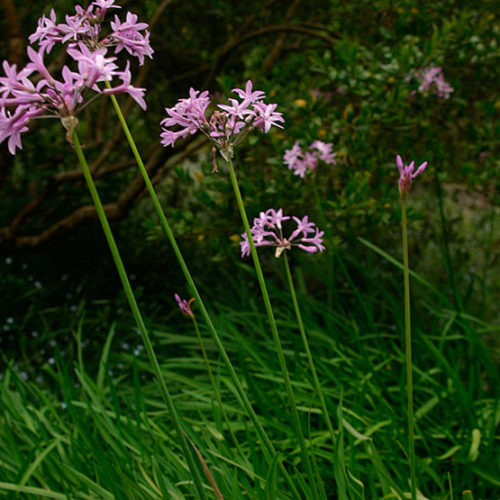Letting Loose the Secret to Successful Agapanthus Cultivation: Advice for a Flourishing Garden
In the realm of gardening, cultivating agapanthus efficiently calls for a strategic strategy that includes various facets of plant care. By recognizing the subtleties of agapanthus cultivation, one can develop an atmosphere where these plants thrive and flower abundantly.
Growing Agapanthus: Finest Practices
When planting Agapanthus, proper dirt preparation is crucial for making sure successful development and growth of these lovely flowers. Agapanthus, frequently called Lily of the Nile or African lily, grows in well-draining soil with a somewhat acidic to neutral pH degree - Agapanthus. Before planting, it is vital to change heavy clay soils with natural matter such as compost or peat moss to enhance drain and supply important nutrients for the plants
To grow Agapanthus, choose an area that receives full sunlight to partial shade, as this will certainly advertise healthy and balanced development and abundant flowering. Dig an opening twice the size of the plant's root ball and position the Agapanthus at the very same depth it was previously expanding. Delicately backfill the hole with soil, pushing down strongly to remove any type of air pockets around the origins.
Water the freshly planted Agapanthus thoroughly and remain to keep the soil equally moist, specifically throughout the plant's energetic expanding period. Agapanthus. Applying a well balanced plant food once a month can additionally support the plant's development and flowering. By complying with these finest methods for planting Agapanthus, you can create a stunning display screen of these captivating blossoms in your garden
Ideal Dirt Issues for Agapanthus
For optimal growth and growing success of Agapanthus plants, ensuring the dirt conditions are perfect is essential. Agapanthus favors dirt that is abundant in nutrients, so integrating a balanced plant food throughout the growing period can promote healthy and balanced development and lively flowers.

Watering and Fertilizing Tips
To make sure healthy and balanced development and vibrant blooms, proper watering and feeding strategies are crucial for successful Agapanthus farming. Agapanthus plants profit from normal watering, particularly during the growing season. It is recommended to water deeply once a week, making certain the original source the dirt is wet yet not saturated. Throughout heat or in pots, more regular watering may be required to avoid the soil from drying out completely.
When it concerns feeding Agapanthus, a balanced fertilizer with equal parts nitrogen, phosphorus, and potassium can be applied in the springtime to advertise healthy development and blooming. Slow-release plant foods are excellent for offering nutrients gradually over an extended duration. Prevent over-fertilizing, as this can cause extreme foliage development at the expenditure of blossoms.
Furthermore, incorporating organic matter like garden compost right into the dirt can view publisher site improve nutrient levels and boost dirt structure, assisting in the overall health of the Agapanthus plants. By complying with these watering and feeding suggestions, garden enthusiasts can guarantee their Agapanthus plants grow and create stunning screens of blossoms.
Pruning and Deadheading Strategies
Correct trimming and deadheading methods play a crucial function in maintaining the health and aesthetics of Agapanthus plants, matching the important practices of watering and feeding for effective farming. Pruning Agapanthus includes eliminating spent blossom heads, yellowing or dead leaves, and total shaping of the plant to promote much better development. Deadheading, the process of eliminating discolored flowers, not only boosts the plant's appearance however also motivates further blooming.
When deadheading Agapanthus, it is recommended to clip off the blossom stem at the base using sharp, clean shears. This procedure redirects the plant's power from seed manufacturing back right into root and foliage growth, promoting a much healthier and much more durable plant. Regular deadheading can extend the growing duration of Agapanthus and prevent self-seeding, see this which can lead to overcrowding.
In regards to trimming, Agapanthus normally advantages from a light trim after blooming to clean the plant and motivate fresh growth. Reducing the invested flower stems and removing any kind of broken or dead vegetation assists preserve the plant's vigor and general appearance. However, it is important to prevent cutting right into the crown of the plant, as this can deteriorate its health and wellness.

Protecting Agapanthus From Pests and Diseases
Carrying out reliable parasite and condition monitoring techniques is crucial to securing the health and vitality of Agapanthus plants in cultivation. One usual pest that impacts Agapanthus is the Agapanthus borer, a caterpillar that passages into the plant, triggering damages to the leaves and blossoms.
In enhancement to insects, Agapanthus are prone to illness such as root rot and fungal fallen leave areas. By staying alert and attending to insect and illness problems quickly, gardeners can aid their Agapanthus grow and prosper.

Final Thought
Finally, successful farming of agapanthus requires appropriate growing techniques, optimal dirt conditions, appropriate watering and feeding, routine trimming and deadheading, and protection from bugs and conditions. By adhering to these tips and techniques, gardeners can guarantee a prospering garden full of gorgeous agapanthus flowers. Agapanthus. Bear in mind to keep consistent care and interest to detail to promote the health and wellness and long life of these sensational plants
When growing Agapanthus, correct dirt prep work is essential for guaranteeing effective growth and development of these stunning flowers.Water the recently grown Agapanthus completely and continue to keep the soil evenly damp, particularly during the plant's active expanding period.For optimum development and flowering success of Agapanthus plants, making sure the soil conditions are optimal is vital. When transplanting or growing Agapanthus, make certain the dirt is well-prepared to give the needed structure for the plants to develop themselves effectively. One typical bug that influences Agapanthus is the Agapanthus borer, a caterpillar that passages into the plant, causing damages to the flowers and leaves.